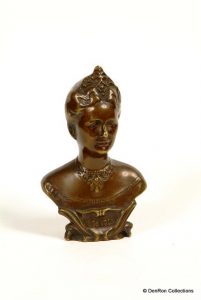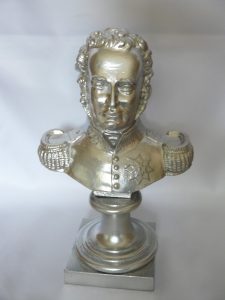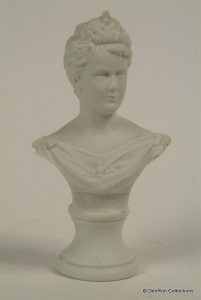
ROYAL BUSTS
A bust is a sculpture showing only the head, shoulders and chest of a person.
Busts are usually made of living persons or persons of historical interest.
Busts were already made in Old Egypt 3300 BC and later in the Greek period.
They were made to show the people who their King or leader was. They can compare these with state portraits nowadays.
Clay or chalk was used to make busts, they were also used to make a bronze or metal model of the bust.
Sometimes they were made in stone or marble using special tools.
Usually busts were placed in public buildings. In 1860 the German porcelain manufacturer Scheibe –Alsbach from Thuringen (est. 1835) started making smaller busts of porcelain of historical figures. These were very popular up until the 1920’s.
They made one of King Willem III to commemorate his silver jubilee in 1874 and later in 1890 of the young Queen Wilhelmina. Many busts were made of Queen Wilhelmina. Busts are still made as commemoratives but are no longer in fashion.
Here some examples from our collection:
bust of King Willem I ca 1835

- Porcelain bust of King Willem III ca 1874.
made by the German factory Scheibe-Alsbach

- Porcelain bust of Queen Emma 1879.
Made in Germany

- Porcelain busts of Queen Wilhelmina ca 1890.
Made by Scheibe-Alsbach Germany.
- Porcelain busts of Queen Wilhelmina ca 1890.
bust Wilhelmina 1898
-

- Bust of princess Juliana ca 1913

- Bronze bust Wilhelmina 1923














